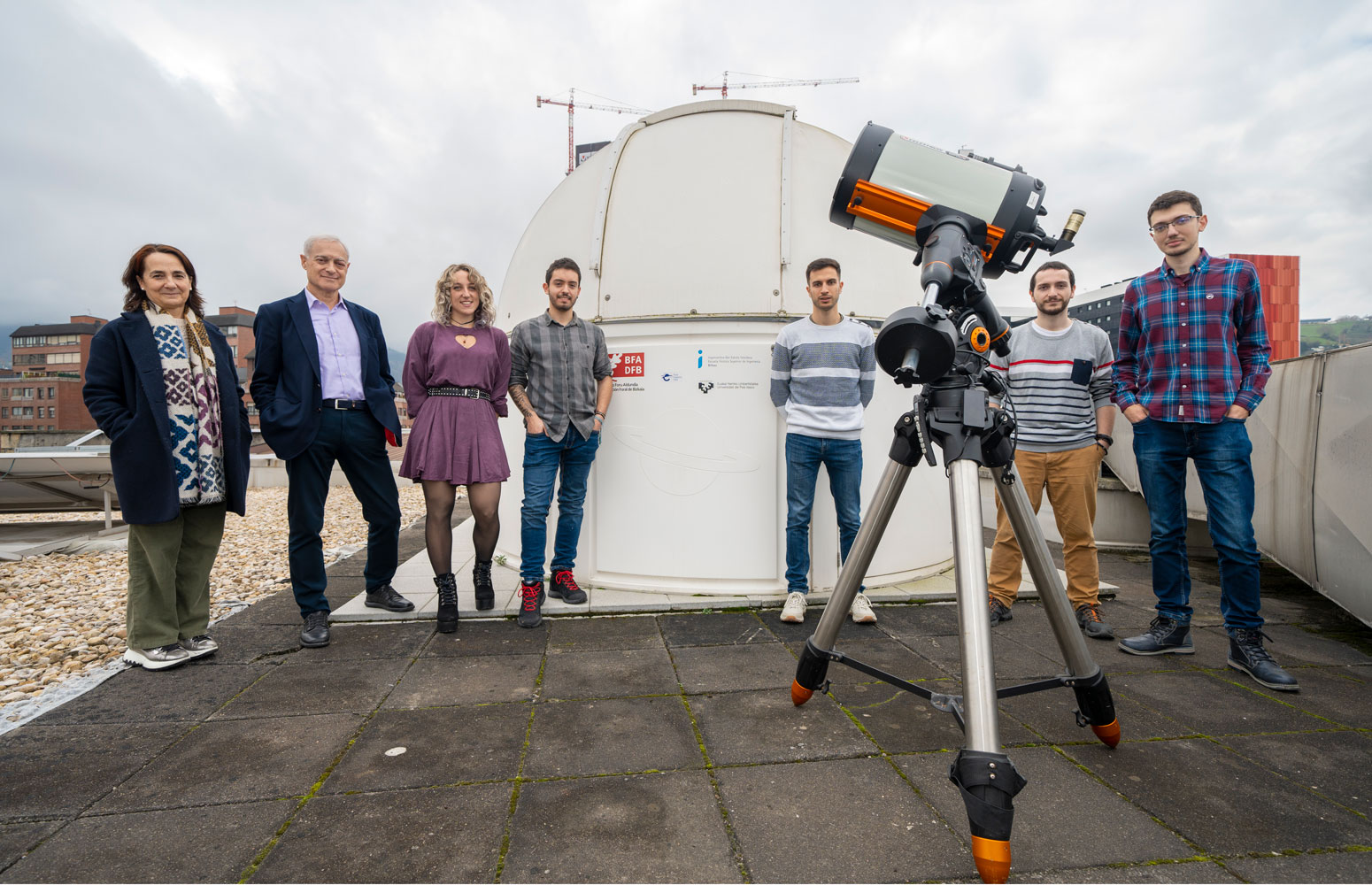The origins of stellar interferometry date back to 1803 with the first studies of the British Thomas Young and his double-splitting experiment to combine light from two emitting sources, which was carried out half a century later by the Frenchman Hippolyte Fizeau. But it wasn't until 1891 that American physicist Albert Abraham Michelson (famous for the Michelson-Morley experiment and winner of the Nobel Prize in Physics in 1907) successfully used the technique to measure the diameters of Jupiter's Galilean moons. In 1820, Michelson, along with astronomers JA Anderson and FG Pease, was able to measure the diameters of giant stars for the first time. Since then, interferometric techniques have been a powerful tool in astronomy, although difficult to manipulate experimentally, and have been used from laboratories on Earth and in space.
In the Master's degree program in Space Science and Technology at UPV/EHU, the subject Space Interferometry is taught, where its fundamentals are introduced and practices are carried out by simulating telescopes, stars with laser light sources and plastic optical fibers. Upgrade to some previous releases. But this time, the aim was to obtain and study interferograms of truly bright stars chosen for their characteristics. These are Sirius, a white star, bright in the sky, and the stars Betelgeuse (red) and Rigel (blue) in the constellation Orion. Detection of the interference patterns of these stars was carried out using the 28 cm diameter telescope of the Bilbao School of Engineering Ala Espacio Gela.
Pablo Rodríguez-Ovalle, Alberto Mendi, Ainhoa Angulo, Ivan Reyes, Mikel Pérez-Arrieta, students who already have a master's degree, led by Professor Asun Illarramendi and the director of the classroom and Master Agustin Lavecanches. Experimental preparation of the device and acquisition and study of interference patterns of these stars. Although the experimental patterns match the theoretical prediction reasonably well, they found that their interference view is affected by turbulence (known as “seeing”) in Earth's atmosphere, i.e. irregular movements of our atmosphere's air masses. Light from the star passes through until it reaches the telescope. By tweaking the theory, the team was able to measure atmospheric turbulence on observing nights, a fundamental feature that all observatories want to measure because of its detrimental effect on acquiring astronomical images with telescopes on Earth.
This method is proposed as a procedure by which important concepts related to stellar interferometry, such as the spatial and temporal coherence of light, are analyzed. In addition, the experiment provides measurements of the turbulence of Earth's atmosphere, selecting different types of stars, wavelengths, and properties of the masks placed over the telescope objective to produce interferograms. The work has been published in the magazine American Journal of PhysicsPublished by the American Association of Physics Teachers and the American Institute of Physics, one of the most valuable books in physics education.

